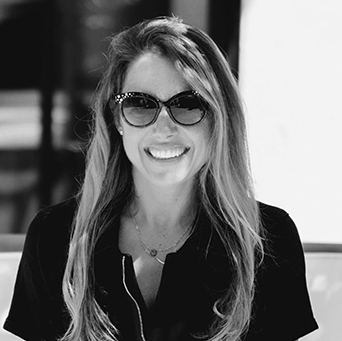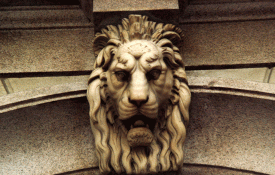Last month, industry leaders and co-authors Joe Belliotti and Rebecca Jolly celebrated the release of their book, How Music Grows Brands, in which they share wisdom from their 20+-year careers working at the intersection of global brands and music in various leadership roles. Their goal was to create a functional “field guide” for the industry and those interested in this landscape to create and optimize impactful partnerships that propel innovation through the power of connecting advertising with brand and music.
“Our goal is to evangelize the space and give brands practical tools to be able to drive value in ways marketers can see the direct impact and effect it has on their brand growth,” Belliotti said.
TELL US HOW YOU GOT YOUR START IN THE BUSINESS
BELLIOTTI: I got my start in music publishing at Maverick and moved into brand building working for Chris Lighty, who managed 50 Cent, LL Cool J, Busta Rhymes. We worked with corporate America helping brands connect with pop culture through music and eventually we became the global music agency for Coke. And after a couple of years, I moved to Atlanta to become head of global music for The Coca-Cola Company for about eight years, setting strategies, partnerships, and content programs. I worked most recently with brands like Orangetheory and in 2020 joined Songtradr, a b2b company using technology and data to help brands make more informed choices about music, which drives more effective content overall.
JOLLY: I’m currently in the U.K., but was in the U.S. for over 10 years, working between the brand agency, along with the music and entertainment side, starting with brand and ad agencies like RSCG and then moved to the music and entertainment side. I came to the U.S. to launch Spotify, which is where Joe and I actually first crossed paths when Spotify and Coca-Cola did a partnership 12 years ago. I then worked for IDT in the U.S., when we were acquired by SFX, heading up partnerships, and went to launch Mixmag, the U.S. music publisher, which was an agency model connecting brands to audiences by engaging audiences through music and culture.
After knowing Joe for years, during lockdown we felt things were very fragmented and complicated in the music and brand world and if only there was a kind of handbook that people navigate it—because we would have found that so useful—so we decided we should write it.
TELL ME ABOUT YOUR “AHA MOMENT” FUSING THE POWER OF MUSIC AND BRANDING
BELLIOTTI: It’s all about creating an emotional reaction to the brand and driving brand value to the point where it makes a difference in the purchase intent, for example where people are drinking more Coca-Cola because of the things we’re doing in music. I realized that if I could get Coke to realize that value, then they would invest more in music from artists and the music industry as a whole. We see now more than ever that brands like Vans and Red Bull get it and see the value, but there’s still a long way to go. There’s probably 10 times more investment in sports than in music and influencer marketing is probably five times the size than spending in music. I’ve spent a lot of time working on bridging that gap and building that momentum to commercialize.

The cover of Belliotti’s and Jolly’s book “How Music Grows Brands”
WHAT DO YOU WANT PEOPLE TO TAKE AWAY FROM THIS READ?
BELLIOTTI: When we started putting it together, we wanted it to be a practical guide where a brand manager or CMO thinking about navigating music can find quick and easy guidance. If I’m on the music side and I’m building a partnership with a brand, what are some of the things that I can use to create value? It’s a field guide that people can pull out when they need it and flip through with examples and anecdotes on how things went right and wrong, strategies, tools, and frameworks, along with the thinking we use and questions we ask from digital and influencer marketing for people to build better activations and partnerships.
JOLLY: During lockdown, there was a lot of concern about the future of music and what this space was going to look like coming out and how to get more investment into the music space, so we created this methodology, kind of a checklist and toolkit, to sell things internally and to build for anyone working in brands so that they can get teams internally on board
WHAT ARE SOME OF THE TRENDS IN THE WAY MUSIC IS BEING USED IN ADVERTISING?
BELLIOTTI: It all comes down to storytelling and how brands fund content—from a digital piece to a film—and artists can be a key part of the entire story, like Pharrell as the new designer for Louis Vuitton. That was one of the biggest talked about things in the industry. Brands also use music to amplify their content from placements, writing original music, sonic branding. Then there is using music as a passion point. Whether that’s experiences or artist partnerships or storytelling content.
We are seeing this at a tipping point. TikTok has been the best thing for music for brands because it’s created this sense of urgency within brands to understand how to use music better because you have this platform using sound, which has critical importance for the branded content.
During the Super Bowl this year, so many ads used music to tell their stories—Jack Harlow for Doritos, Diddy with the jingles, or even Workday with people being rockstars at work. Also, thanks in part to the pandemic, we’re seeing hybrid experiences with live and livestream coming together. Now a 150-person event reaches millions of people so brands get scale out of these live experiences and there are performance marketing mechanics that sit underneath these livestream activations to drive the business value.
WHAT ARE SOME OF YOUR FAVORITE EXAMPLES WHERE YOU SAW VALUE-ADD AND REAL
EQUITY BEING BUILT?
BELLIOTTI: One of my favorite examples is what Grubhub did with First Tube Media. They created a program called sound bites using live events and broadcasting them with emerging artists. They started small and live streaming, but now using top-tier talent. What they would do is they’d run promotions during the livestream, so you could order Grubhub during the broadcast or you get a discount. Retargeting people after the broadcast and sending information about the next event, building up this community. They kept repeating it to the point where they’re building equity, attracting bigger artists, and also attracting their partners like Burger King coming in and doing a Grubhub sound bite and co-funding and promoting it.
JOLLY: At Beatport, we did a grassroots program with Microsoft, working with artists and creatives to facilitate making new music. As the world has changed and with all the technological advancement, we are seeing more of this.
SoundBytes is a marketing collective bringing best-in-class marketers together to propel collaboration, innovation, and deal-making, featuring a diverse range of speakers and addressing key topics across entertainment, music, sports, and media. The mission of Soundbytes is to build community, create authentic connections by sharing insight and intel to help propel collaboration and business objectives forward into the future. Run by Michelle Edgar and Jessica Nuremberg, SoundBytes has curated over 30 sessions featuring Fortune 500 C-suite marketers.














































